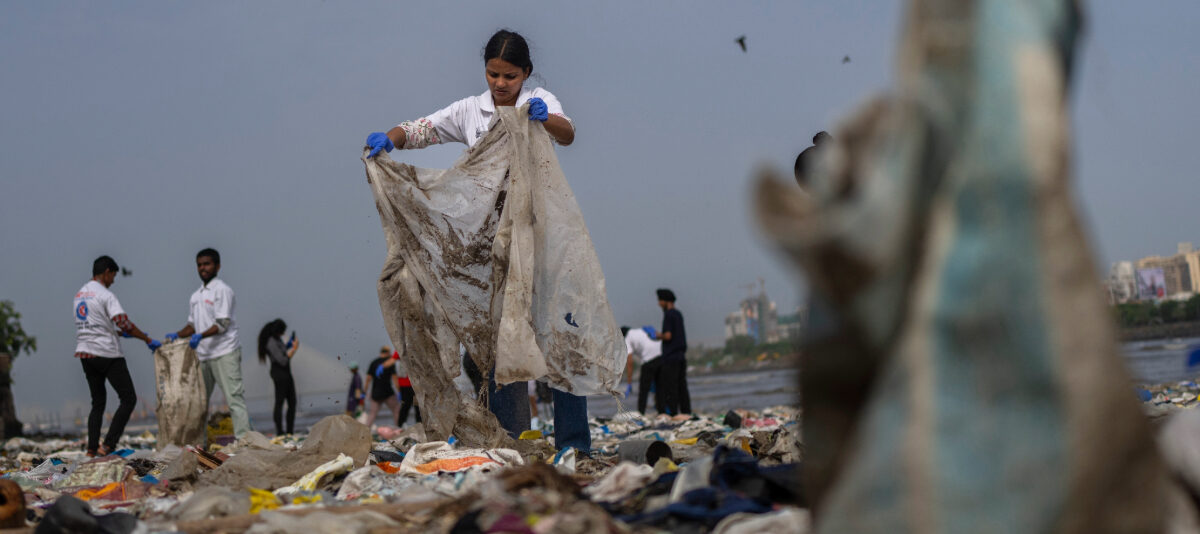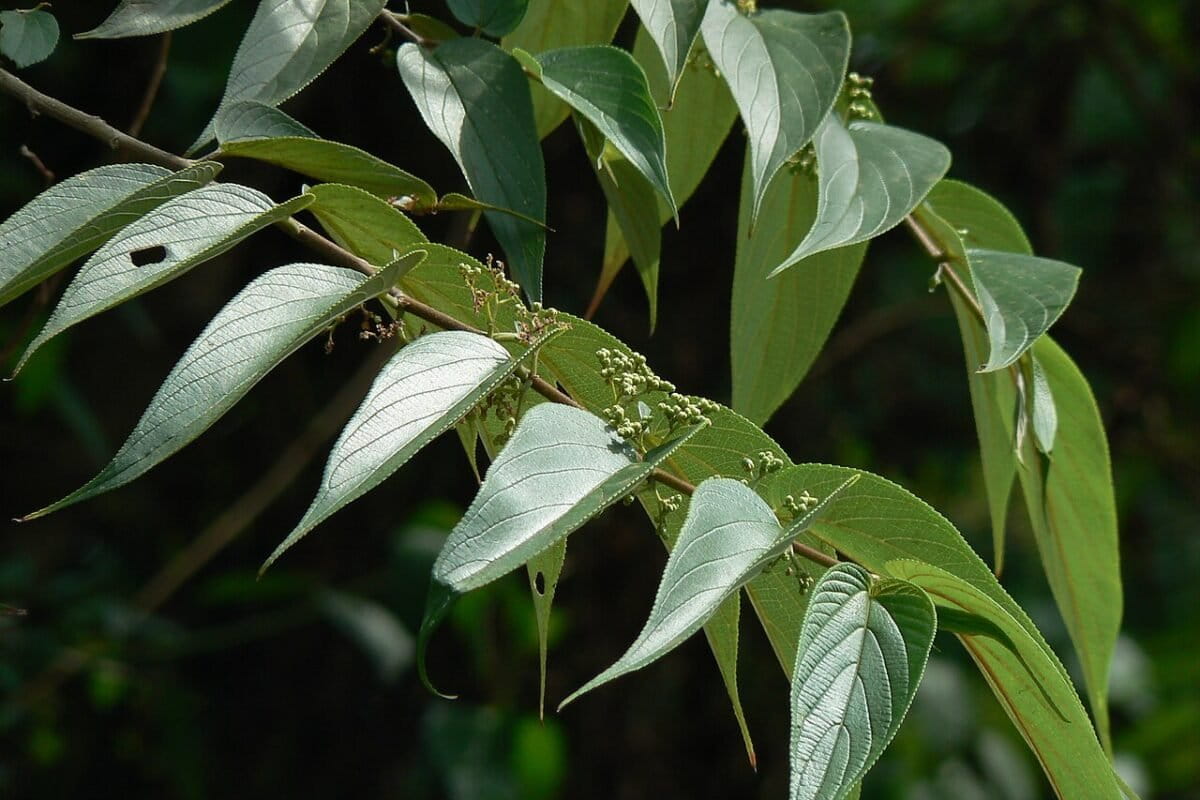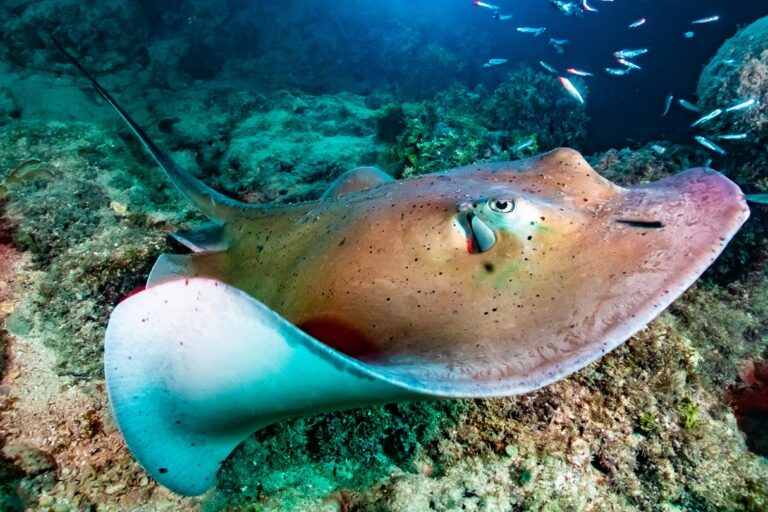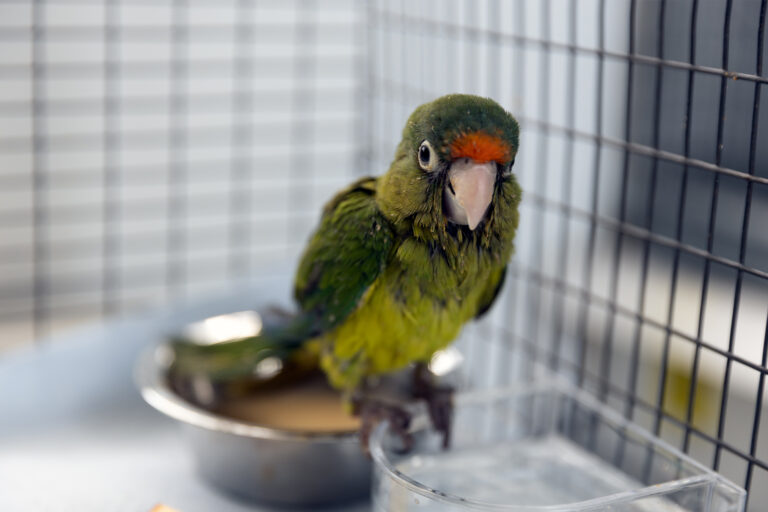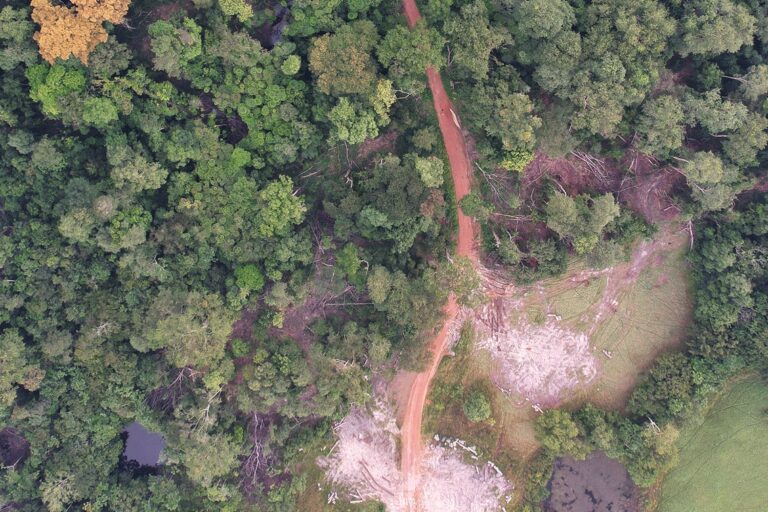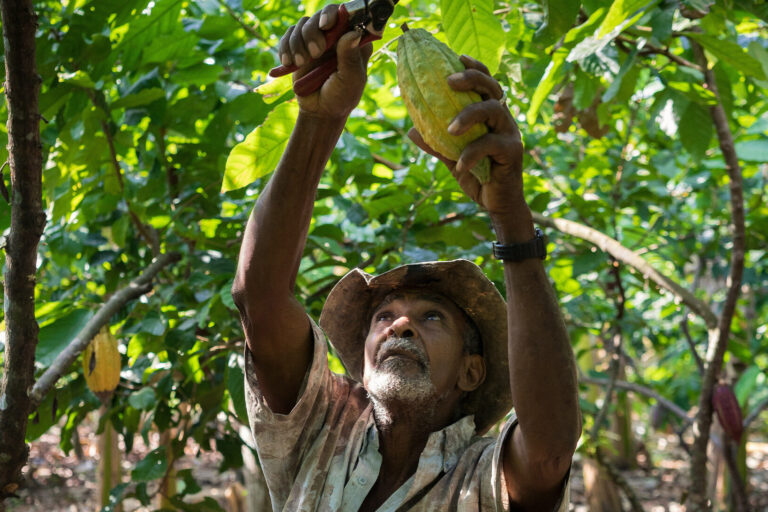- Madagascar saw a relatively recent mass extinction event about 1,000 years ago, when gorilla-sized lemurs, towering elephant birds, and grand tortoises were all wiped out from the island.
- A recently published paper complicates the widely-held understanding that humans were to blame for the crash, by drawing attention to a megadrought that the authors say also played a role.
- The new study uses geological evidence from Madagascar and Rodrigues, an island now part of Mauritius about 1,600 kilometers (1,000 miles) east of Madagascar, to construct a climatic record.
- Some scientists have questioned whether the geological record from Madagascar paints an accurate picture of past climate, or whether the data from Rodrigues can shed light on conditions in Madagascar.
The growing consensus that the earth is in the throes of a sixth mass extinction has focused attention on a centuries-old ecological puzzle: why do species suddenly disappear by the droves?
Madagascar could hold some lessons, but scientists are still debating what happened there. The vast tropical island in the southwest Indian Ocean experienced a megafauna crash relatively recently, about 1,000 years ago. Yet we still do not know for sure what doomed the gorilla-sized lemurs, towering elephant birds, and grand tortoises that once roamed the island.
Humans and climatic changes are scientists’ favored culprits when explaining megafaunal collapses worldwide, especially since human arrival on islands has almost always ushered in dramatic biodiversity losses. But disentangling the importance of each is still a ripe area for research.
A recently published paper in the journal Science Advances complicates the widely held understanding that humans in Madagascar were solely to blame, by drawing attention to climatic disruptions. The authors constructed a climatic record spanning 8,000 years. During this period, the island’s inhabitants experienced several stretches of arid conditions. Madagascar was in the grips of one such megadrought when megafaunal extinctions swept the island, their analysis shows.

“Whether you look in Mauritius, Rodrigues, or Madagascar, we have records of megafauna surviving right through all those climate changes,” said study co-author Ashish Sinha, a climate scientist at California State University, Dominguez Hills. “So, the question is, why do they not survive the last episode of climate change?
“The answer we suggest is that you have an additional stressor now in the form of human activities,” Sinha said.
Not many would argue that humans weren’t a headache for animals in Madagascar, especially for large ones that could be easily hunted. What is debatable is whether humans were the primary driver of extinctions or merely aggravated perilously harsh climatic conditions. The answer depends on three key questions: Were humans present? What was the climate like? And, what were humans doing?
The answer to the first is a resounding yes. For many years the consensus was that humans arrived in Madagascar about 2,500 years ago. However, in 2018, scientists described fossilized bones of giant elephant birds with signs of human butchery that dated from around 10,500 years ago. In any case, it would appear humans were very much on the scene when wildlife started to do its disappearing act.
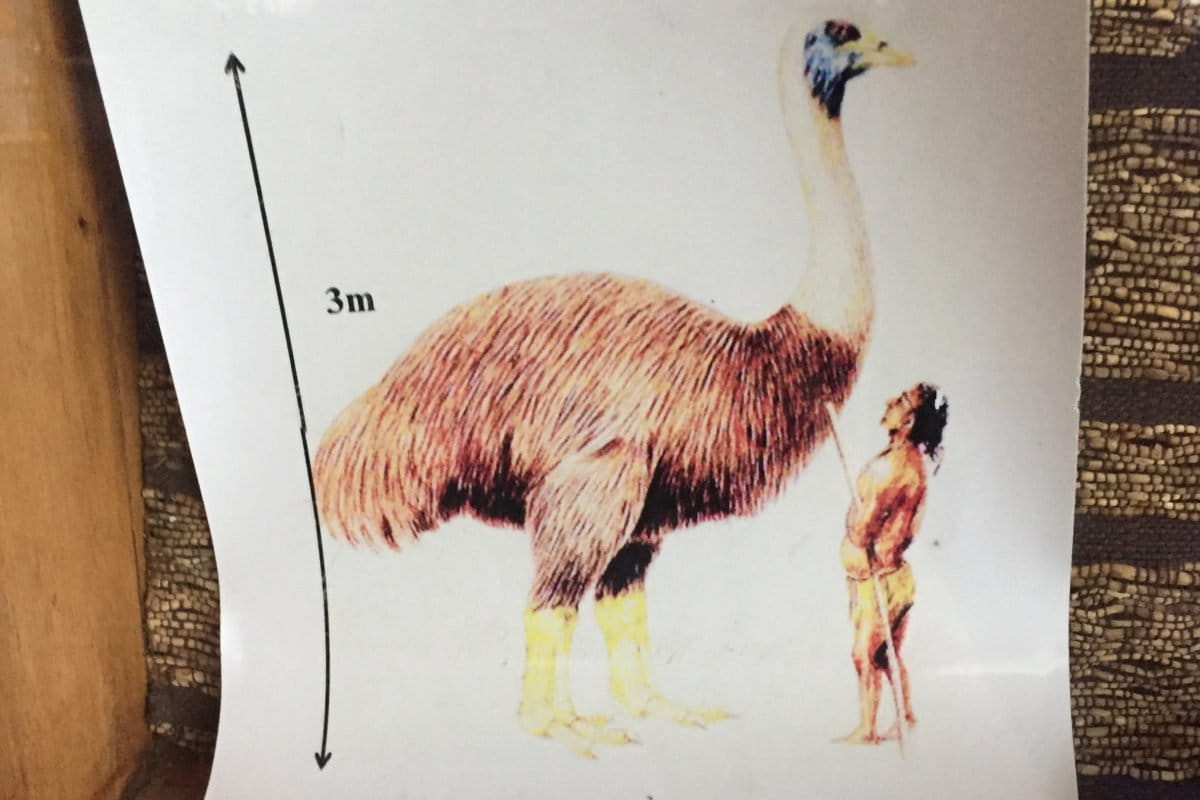
To capture climatic disruptions, researchers have sought answers in Madagascar’s caves, where imposing stalagmites act as keepers of the climatic record. The chemical make-up of stalagmites, stalactites and other cave formations, or speleothems, that accrue from mineral deposits over thousands of years, can help scientists decipher the climatic conditions of a given period in time. The Anjohibe cave complex in northwest Madagascar is the source of much of the speleothem record.
What is interesting about the new study is that it also uses speleothems from Rodrigues, a small volcanic island that today is part of Mauritius, located about 1,600 kilometers (1,000 miles) east of Madagascar. Explaining the decision, Sinha said human presence meant that stalagmites from Madagascar would have the imprint of human-induced landscape changes, which would make it difficult to isolate climate signals.
“Although Rodrigues also underwent prominent ecological and landscape transformations coinciding with the arrival of humans and their permanent settlement, these changes occurred a few centuries after the Malagasy megafaunal extinction,” Sinha said.

His team’s work paints a different picture of Madagascar’s climatic conditions than earlier research based on stalagmites from the same cave complex. This has raised eyebrows and a few questions.
“Their new record from Rodrigues is fantastic. However, the new climate record from northwestern Madagascar has some serious flaws,” said Laurie Godfrey, a paleontologist at the University of Massachusetts Amherst, who was not involved in the new study. “The new data contradict a lot of well-established, high-quality climate records from the area.” Godfrey and her colleagues published a paper last year arguing there was no devastating dry spell at the time of the crash and proposed a theory in which humans were the main culprits.
She said the findings of the new paper were yet to be replicated. Sinha acknowledged that their data are not consistent with other climatic data from Madagascar, but said it matched the record from Rodrigues.
How is it possible that two groups of scientists looked at similar material and drew different conclusions? This is partly because no two stalagmites are created equal. The conditions, even within the same cave complex, could produce stalagmites with varying chemical compositions.
Sinha said they were confident of the results from Rodrigues and that the large-scale climatic changes that impacted Rodrigues were likely to have played out in Madagascar as well. Godfrey, on the other hand, said she was not convinced that conclusions about the climatic conditions in Rodrigues could be extrapolated to Madagascar.
Their differing views about the climatic conditions have colored their conclusions about the importance of humans in driving animal extinctions.

“In the northwest, the megafauna crashed, and the habitat changed from woodland to savanna during the wettest part of the past two millennia, not a time of drought — because of human activities,” Godfrey said in an emailed response. “Across Madagascar, we do have evidence that climate change did have impacts on the megafauna, but climate change was not the main trigger of megafaunal decline.”
For Godfrey and others who highlight human impacts as the prime factor, a key concern is explaining how these activities impacted megafauna populations. For them, the presence of humans thousands of years before the megafauna crash is a conundrum.
Godfrey’s 2019 study, proposed that early migrants who landed in Madagascar were restricted to hunting and gathering and left little imprint on their surroundings. However, the rise of slash-and-burn agriculture and animal husbandry changed that equation. Human numbers swelled as a result. As they continued to hunt to supplement their diets, their sheer numbers put even more pressure on wildlife than during the time of the earlier hunter-gatherers.
“We are saying that the picture is more complicated,” Sinha said. “What we’re saying is that human impact was very important, but the climate was not stable. We are saying that the climate did play a role.”
Scientists studying species loss in the 21st century may find it easier to lay the blame at the feet of humans given that today climate change itself has a well-documented cause: humans.
Citations:
Li, H., Sinha, A., André, A. A., Spötl, C., Vonhof, H. B., Meunier, A., … Cheng, H. (2020). A multimillennial climatic context for the megafaunal extinctions in Madagascar and Mascarene Islands. Science Advances, 6(42). doi:10.1126/sciadv.abb2459
Godfrey, L. R., Scroxton, N., Crowley, B. E., Burns, S. J., Sutherland, M. R., Pérez, V. R., … Ranivoharimanana, L. (2019). A new interpretation of Madagascar’s megafaunal decline: The “Subsistence Shift Hypothesis.” Journal of Human Evolution, 130, 126-140. doi:10.1016/j.jhevol.2019.03.002
Malavika Vyawahare is a staff writer for Mongabay. Find her on Twitter: @MalavikaVy
FEEDBACK: Use this form to send a message to the author of this post. If you want to post a public comment, you can do that at the bottom of the page.



